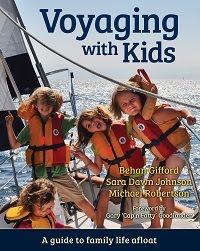For
a while now I’ve been thinking about writing something in this space to inject
a bit of perspective I feared was lacking. I post the prettiest pictures from
our lives afloat and I really don’t have anything bad to say about how we’re
living. The four of us enjoy ample time without distraction. We’re learning and
discovering things together, a unique aspect of perpetual family travel. After
nearly five years, there’s not much I would change.
The
problem is that I’m a cheerleader for a way of life that I know is absolutely
not for everyone.
We
regularly get emails from excited, prospective cruisers and cruising families. On
one hand, I’m excited for each of them. On the other hand, I can’t help but
think at the same time of all the cruising couples and families we know or have
heard about who have poured a fortune into a boat and radically changed their
lives to take the plunge into the voyaging life, only to abandon their dream a
short time later, for one reason or another.
Should
I more loudly broadcast the challenges that impact all cruisers, impacting some
to a degree that makes cruising untenable?
I
can assure you that cruising is scary at times (and very scary, we nearly lost
Del Viento one night, a couple years back). I am aware of cruisers who have been injured and some
who have lost their lives. I can warn you that living in close quarters is more
togetherness than some will want. I know of relationships, of marriages, that
could not withstand the stresses of life aboard. I can promise you that
cruising will not be like your last Caribbean charter, that you’ll work like a
pioneer to meet basic needs. That getting the water, food, and fuel aboard might
take days and there’s a good chance you will not enjoy the chore. That it’s you
who will fix the stuff when it breaks. And even if you install all the bells
and whistles on your boat, you won’t come close to replacing the land-based creature
comforts and conveniences you’ve taken for granted all your life. One or more
of your crew will likely and often get seasick. I can point to the inherent
risks to crossing oceans and living away from immediate access to comprehensive
medical care. Of the cost of living apart from extended family and close
friends.
The
reasons a voyaging life doesn’t work for many are varied and personal. In the
end, there is no litmus test for determining what kind of experience anyone is
going to have out here or how they’re going to respond to it. Even if I knew a
person very well, I don’t think I could accurately appraise their suitability
to living the way we do. I think I would be surprised by some I’d think were
obvious land lubbers, and I think I would be equally surprised by some I’d be
sure where better suited. I’ve just met too many different people out here,
from all walks of life, all nationalities, all shapes and sizes, with no
discernable common thread. I can’t articulate the reasons it works for us and
others. Dumb luck plays a role.
I
think the best anyone can do is to respond to their interests. If exploring
this planet by boat appeals to you and your crew, if managing the risks and
confronting the hardships seem more like a challenge than a bad idea, and if
you’re physically and financially able to make this dream happen, go. Because the
destinations are indeed pretty, the adventures are grand, and the gifts
unexpected. Go because life is short. And pursuing your dreams, even at the
risk of learning they weren’t your dreams, is the surest way to feel alive.
My
30th high school reunion is this year and I know that if I was
somehow able to attend, and if everyone there was fit, attractive, and bought a
new Porsche every year, I would still feel like the luckiest guy in the room. I
took a risk to learn that.





















